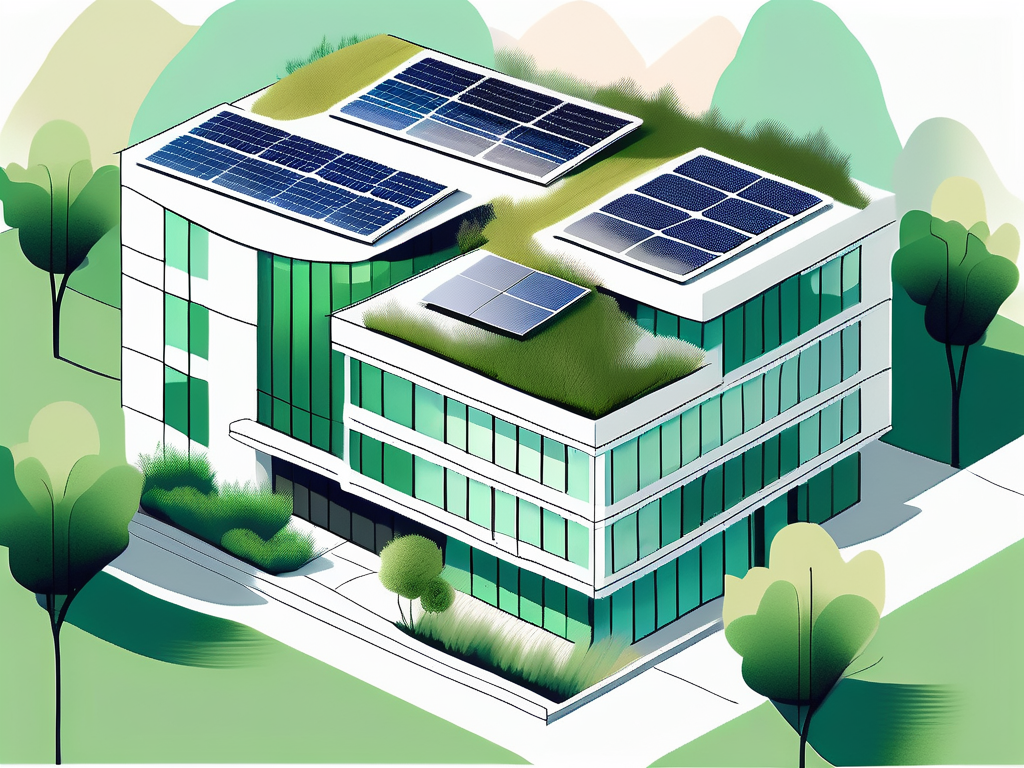Sustainable building has become a buzzword in recent years, with architects and designers embracing the concept and incorporating it into their projects. But what exactly does sustainable building mean, and how does it impact the work of architects? In this article, we will explore the principles of sustainable buildings, the governing bodies that oversee sustainable practices, the driving factors behind sustainable building, and the successful architects who have embraced this growing trend.
The Principles of Sustainable Buildings
At its core, sustainable building aims to minimize the negative impact on the environment while maximizing the efficient use of resources. This approach involves three key principles:

- Energy Efficiency: Sustainable buildings are designed to minimize energy consumption by using energy-efficient materials and technologies. These include insulation and ventilation systems, solar panels, and LED lighting.
- Water Conservation: Sustainable buildings employ various techniques to reduce water usage, such as rainwater harvesting systems, low-flow fixtures, and efficient irrigation systems.
- Materials and Resources: Sustainable buildings prioritize the use of eco-friendly materials that are renewable, recyclable, and locally sourced. This helps reduce waste and minimize the carbon footprint during construction and throughout the building’s lifespan.
By adhering to these principles, architects can create buildings that not only reduce environmental impact but also provide healthier and more comfortable spaces for occupants.
Energy efficiency in sustainable buildings goes beyond just the materials used. Architects and designers also consider the orientation of the building, the placement of windows for natural light, and the use of shading devices to reduce the need for artificial cooling. By harnessing natural elements and passive design strategies, sustainable buildings can significantly lower their energy demands and operational costs.
Furthermore, water conservation in sustainable buildings extends to innovative solutions such as greywater recycling systems and green roofs that absorb rainwater. These features not only reduce the strain on municipal water resources but also contribute to creating a more resilient and self-sufficient built environment. By integrating water-saving technologies and practices, sustainable buildings can play a crucial role in promoting water sustainability and mitigating the effects of climate change.
Sustainable Building Governing Bodies
Several organizations and governing bodies across the globe are dedicated to promoting and regulating sustainable building practices. These bodies set standards and certifications that architects can strive to achieve in their projects. Examples include:
- The U.S. Green Building Council (USGBC), which developed the Leadership in Energy and Environmental Design (LEED) certification system.
- The Building Research Establishment Environmental Assessment Method (BREEAM), widely used in the United Kingdom.
- The Green Building Council of Australia (GBCA), which oversees the Green Star rating system.
Architects who wish to pursue sustainable building practices often seek accreditation from these organizations, as it demonstrates their commitment to sustainable design and enhances their professional reputation.
In addition to these prominent bodies, there are several other regional and international organisations that play a vital role in promoting sustainable building practices. For instance, the World Green Building Council (WorldGBC) acts as a global network of Green Building Councils, working towards a sustainable future for all. Their initiatives and collaborations help in spreading awareness and best practices in sustainable construction across different countries and regions.
Furthermore, some countries have their own specific governing bodies dedicated solely to sustainable architecture. In Germany, the German Sustainable Building Council (DGNB) is a leading authority that focuses on promoting sustainable building methods and materials within the country’s construction industry. Their rigorous certification process ensures that buildings meet high environmental standards and contribute positively to the overall sustainability goals of the nation.
Driving Factors Behind Sustainable Building
Several factors have contributed to the growing popularity of sustainable building:
- Environmental Concerns: With the increasing awareness of climate change and the need to reduce greenhouse gas emissions, sustainable building offers a viable solution to mitigate environmental impact.
- Cost Savings: While sustainable building may require a higher initial investment, it offers long-term cost savings through reduced energy and water consumption.
- Regulatory Requirements: Governments around the world are implementing laws and regulations that mandate or incentivize sustainable building practices. Architects must comply with these requirements to obtain building permits.
- Customer Demand: Today’s consumers are becoming more conscious of environmental issues and are actively seeking sustainable living options. Architects who embrace sustainable building can attract and retain clients who value eco-friendly design.
These driving factors have created a market demand for sustainable buildings, making it essential for architects to adapt and integrate sustainable practices into their designs.
Furthermore, sustainable building practices not only benefit the environment but also contribute to the health and well-being of occupants. By using non-toxic materials and improving indoor air quality, sustainable buildings create healthier living and working environments for people. This focus on occupant health is becoming increasingly important in the design and construction industry, with studies showing the positive impact of sustainable buildings on productivity and overall well-being.
In addition to the environmental and health benefits, sustainable buildings also have a positive impact on local economies. The emphasis on using locally sourced materials and labour in sustainable construction projects helps support small businesses and create jobs within the community. This approach fosters a sense of pride and ownership among residents, as they witness the tangible benefits of sustainable building practices in their neighbourhoods.
Successful Architects Embracing Customer Demand for Sustainable Building
Many architects have successfully incorporated sustainable building principles into their projects, demonstrating their commitment to both the environment and their clients’ needs. This growing trend in the field of architecture is not only commendable but also essential in addressing the pressing issues of climate change and resource depletion.
Norman Foster, renowned for his innovative designs, has integrated sustainability into iconic buildings like the Hearst Tower in New York City and the Reichstag building in Berlin. Foster’s approach combines cutting-edge technology with environmentally conscious practices, resulting in structures that are both visually striking and energy-efficient.
Zaha Hadid, known for her architectural masterpieces, such as the London Aquatics Centre and the Guangzhou Opera House, showcases her dedication to sustainable design and energy efficiency. Hadid’s buildings not only captivate with their bold and fluid forms but also incorporate sustainable features, such as natural lighting and passive cooling systems, reducing their environmental impact.
Renzo Piano’s work on the California Academy of Sciences in San Francisco exemplifies his passion for sustainable building. The Academy features a living roof, covered with native plants that provide insulation and reduce stormwater runoff. Additionally, solar panels and natural ventilation systems contribute to the building’s energy efficiency.
These architects serve as inspirations for their peers, demonstrating that sustainable building can go hand in hand with innovative and aesthetically pleasing design. By pushing the boundaries of what is possible, they challenge the notion that sustainability compromises creativity.
Moreover, sustainable building practices extend beyond the architectural realm. They also have a positive impact on the health and well-being of building occupants. Features like improved indoor air quality, access to natural light, and the use of non-toxic materials create healthier and more comfortable spaces for people to live and work in.
In conclusion, sustainable building has emerged as a crucial aspect of modern architecture. Architects who embrace sustainable practices can create buildings that are energy-efficient, eco-friendly, and responsive to the needs of the environment and their clients. By adhering to the principles of sustainable building and working towards certifications, architects can make a positive impact on the planet while shaping the future of our built environment. The examples set by architects like Norman Foster, Zaha Hadid, and Renzo Piano inspire us all to strive for a more sustainable and harmonious relationship between architecture and the natural world.
